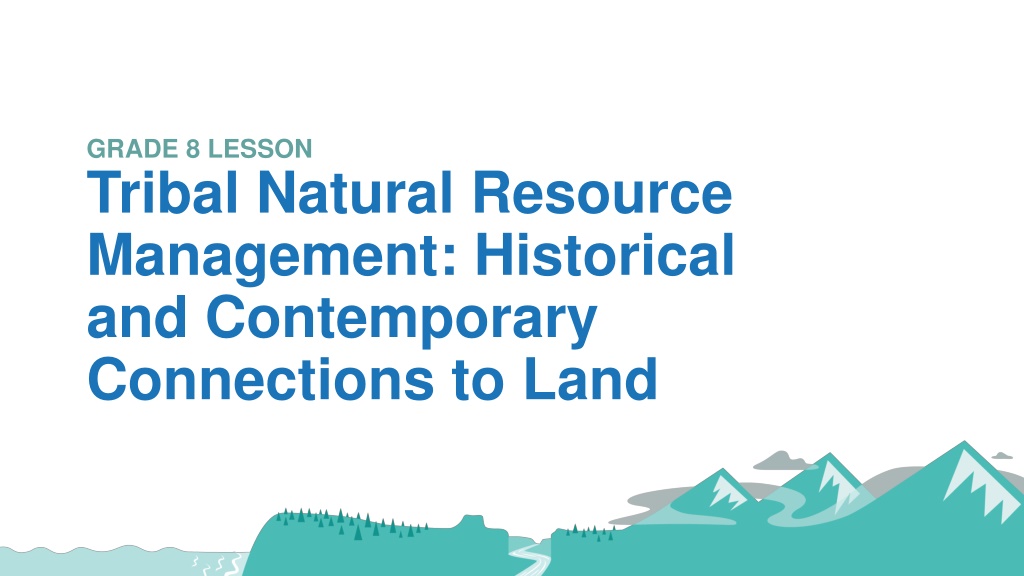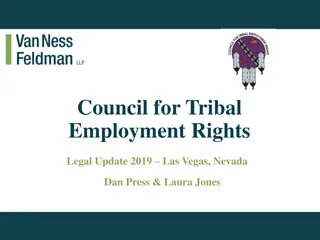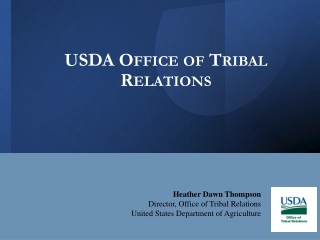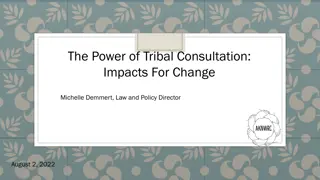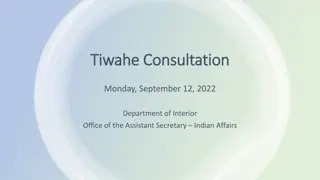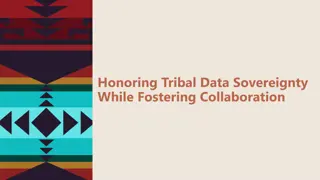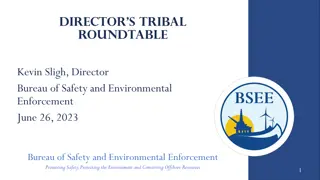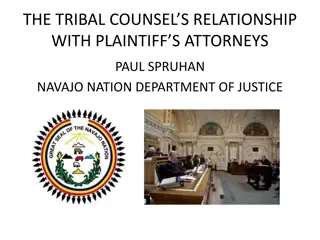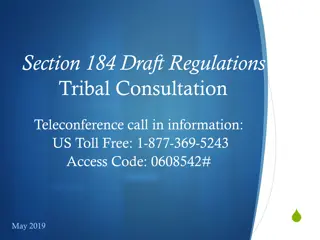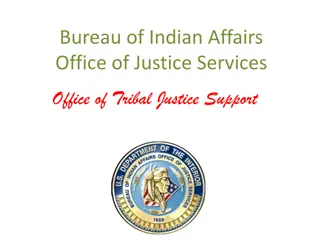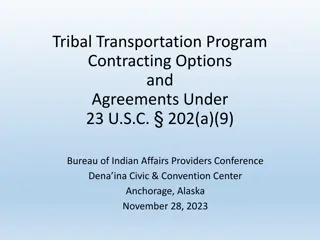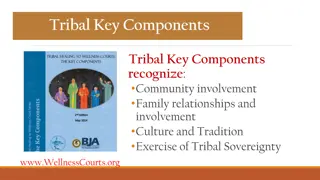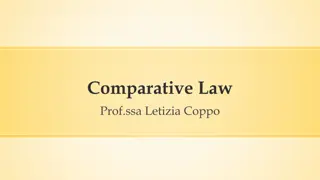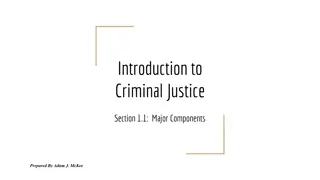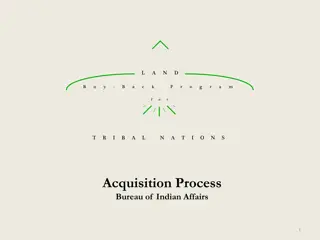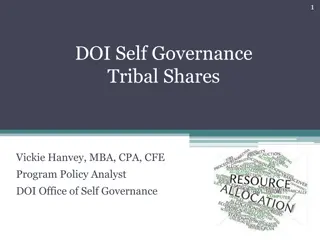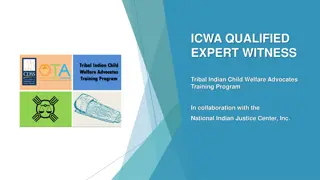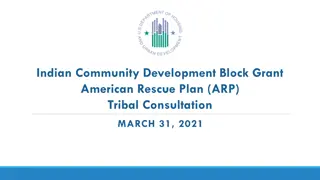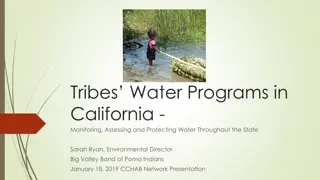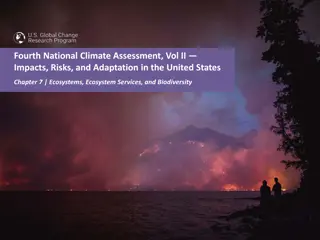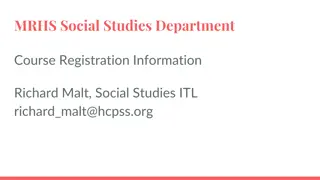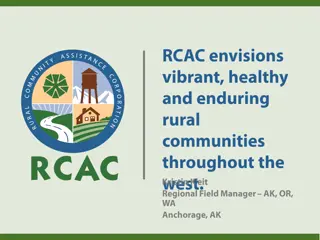Tribal Natural Resource Management and Federal Trust Relationships in the United States
Explore the historical and contemporary connections of Tribal Natural Resource Management, focusing on the Federal Trust Relationship between the United States and Native American tribes. Learn about treaty rights, natural resources, termination acts, restoration efforts, and engage in website activities to delve deeper into the subject.
Download Presentation

Please find below an Image/Link to download the presentation.
The content on the website is provided AS IS for your information and personal use only. It may not be sold, licensed, or shared on other websites without obtaining consent from the author. Download presentation by click this link. If you encounter any issues during the download, it is possible that the publisher has removed the file from their server.
E N D
Presentation Transcript
GRADE 8 LESSON Tribal Natural Resource Management: Historical and Contemporary Connections to Land
Federal Trust Relationship with Tribes In the 1983 U.S. Supreme Court case United States v. Mitchell, the Court described the the undisputed existence of a general trust relationship between the United States and the Indian people. This relationship is one of the most significant and motivating concepts in federal Native American law. What does this have to do with natural resource management?
Treaty Rights and Natural Resources Land rights; water rights; hunting, fishing, and gathering rights; resource rights; and environmental rights.
Natural Resources and Termination The Termination Act was passed in August 1954. It called for termination of federal supervision over the trust and restricted property of numerous Native American bands and small tribes, all located west of the Cascades. The act also called for disposition of federally owned property which had been bought for the administration of Indian affairs, and for termination of federal services which these Native Americans received under federal recognition.
Natural Resources and Restoration The Western Oregon Indian Termination Act or Public Law 588 did what? Restoration: On November 18, 1977, the Confederated Tribes of Siletz Indians became the second tribe in the United States to have its federal status restored. The Tribe regained is sovereignty and the U.S. government resumed its trust relationship with the Tribe. On June 2, 1979, the Confederated Tribes of Siletz Indians adopted a tribal constitution. On November 1, 1979, people of the town of Siletz voted 148 to 134 to give back to the tribe approximately 36 acres of former tribal land, which was originally the site of the old Siletz Agency, known as "Government Hill." The tribe had given this land to the city at the time of termination.
Website Activity Explore the websites of the nine federally recognized tribes of Oregon with students. Does the tribe have a natural resources department? What projects are tribes involved with? Are they collaborating with outside partners? https://www.oregon.gov/ode/students-and- family/equity/NativeAmericanEducation/Pages/Oregon-Tribal- Websites.aspx
Website Activity Questions for Discussion Questions for Discussion 1. What federally recognized tribes are involved in the project? 2. What is the project? 3. What kind of ecosystem is the project working to restore? 4. What are the impacts on the tribe? 5. What outside partners, if any, are involved in the project? 6. Look at the TEK diagram and record how the projects you read about reflect Indigenous values. Each group will present, and the other groups will each ask a question.
Extension Example: Siletz STEP Program
